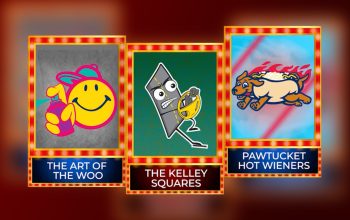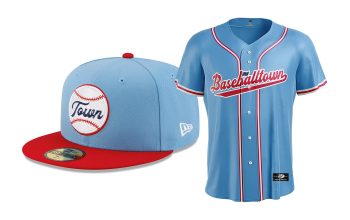
Minor League Baseball’s “Hometown Collection” has revived, and in some cases re-envisioned, obscure identities that might have otherwise been lost to time. Teams like the 1959 Fort Worth Cats, 1954 LA Angels, and the Atlanta Crackers of 1939 have all found new life in a contemporary landscape thanks to the program.
Since 2007, the league has worked with noted designer Todd Radom, who painstakingly researches defunct, often obscure brands to create authentic renderings of headwear marks, logos, and uniform lettering.

While it’s hard to imagine in today’s hyper-commercial world of sports merchandising, one of the challenges Radom faces is that branding has not always been that big a deal, with minor and even major changes from season to season going unnoticed in popular media. Sometimes, though, Radom’s research turns up gems like the 1908 newspaper clipping below, which declares that the Montgomery Climbers will be the “Neatest Looking Bunch in South,” and details the look of their uniforms.

“I’ve found some ridiculously wonderful details, granular stuff, digging through newspaper archives—that’s the most helpful thing,” Radom said. “Where we might imagine the color of some team lettering being, from a black-and-white photo, looking like it’s navy blue when it’s actually red. Many instances where really digging deep and getting contemporary accounts of what the stuff really looked like, that’s really key.”
Of course, some of these identities present bigger challenges than others—the Eugene Larks of 1950–51, for instance, wore two completely distinct headwear marks in their only two seasons in existence. “Really obscure stuff,” Radom said.

Some identities aren’t just challenging to recreate, they’re actually impossible. The information simply doesn’t exist. In these cases, Radom creates what he calls “theme art,” original creations that evoke a style and an era without purporting to be authentic replicas, as with the latest additions to the hometown collection, the Phoenix Firebirds, Roswell Rockets, and Key West Conchs (above).
“In a world full of sports logos, this really wasn’t a formal thing until, in many cases, after World War II—there was no licensing, no marketing of the stuff to speak of,” he said. “So when you’ve got nothing to work with, perhaps some block uniform lettering, it’s a good thing to flesh it out…. I was tasked with creating artwork that was evocative of the era.”
From a designer’s perspective, this is a distinctly different challenge than recreating original logos, and Radom is careful to designate which marks are authentic and which are theme art.
“To evoke a certain kind of time and place, for instance Key West, really come up with something flamboyant, and over the top, that really looks like 1972 Key West, Florida, is a very different from thing from looking at the authentic uniforms of the Montgomery Climbers from 1910,” Radom said.

Speaking of Key West, the erstwhile Conchs, who played from 1972 to 1974, “didn’t have a big budget for their uniforms,” Radom said. “I came up with something a little more exciting than what they actually wore.”

Similary, the Jacksonville Beach Sea Birds warranted a modern-day reimagining.
So, in a minor league baseball landscape that’s already crowded with increasingly wacky brands, not to mention temporary identities like food-based rebrands and the Spanish-language Copa de la Diversión, why introduce even more brands from years past? Because every El Paso Chihuahua and Binghamton Rumble Pony we have today, there was a Roswell Rocket and Oakland Oak that preceded it. It’s all part of the fabric (so to speak) of what brought us to where we are now.
“It’s always been the case in modern-day sports licensing that this leads into fashion and conversation pieces,” Radom said. “If the artwork is cool and there’s real local resonance, there’s appeal to a broad swath of humanity…. It’s amazing seeing these long-dormant clubs, great little stories, come to “life.
MiLB’s Hometown Collection is available on the league’s online store.



